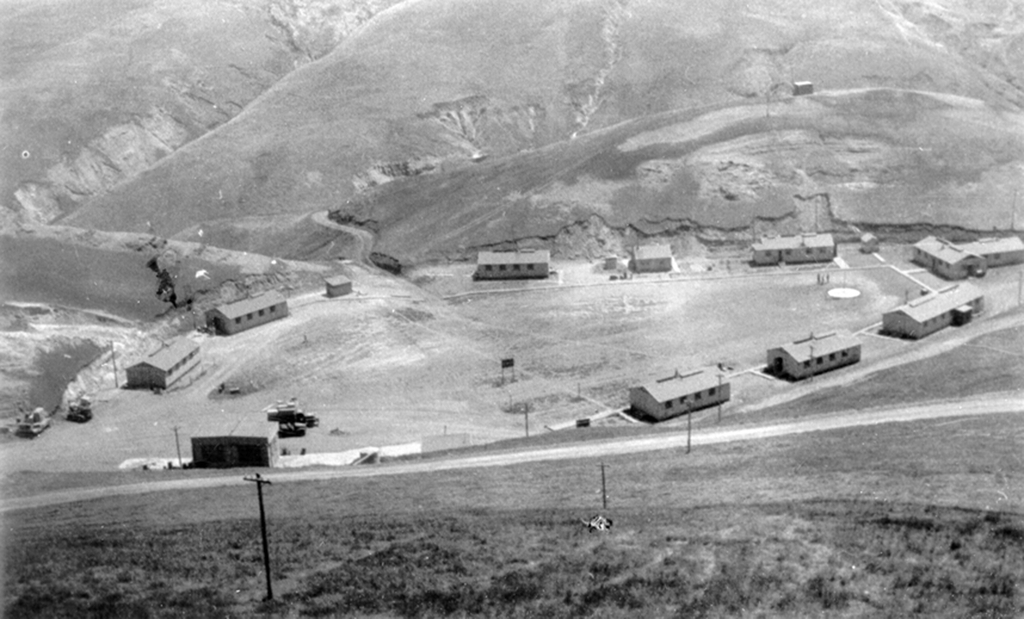
Located along the Soledad Road to Johnsons Lee are the ruins of a coastal defense site built by the US Army in 1943. Prior to the December 7, 1941, bombing of Pearl Harbor by Japan, the United States activated a number of defense mechanisms on the Pacific Coast, but this event put coastal defenses at the forefront of military activity in California. Following the attack, at least three Japanese attacks occurred on the California coast, including the torpedoing of a freighter off Los Angeles and a submarine firing on the Ellwood Oil Field near Santa Barbara. The evolving war in the Pacific spawned a network of coastal lookout stations and aircraft warning installations from San Diego to the Canadian border. The Navy established coastal lookouts on all of the Channel Island, and radar posts on Santa Barbara and Santa Rosa Islands.
The station consisted of a technical radar site overlooking the ocean near South Point, the housing and operations camp on a small, dry pond near Pecho Peak, and storage buildings and a barrack at Bechers Bay. The housing and operations camp had sixteen wood-frame buildings, including seven barracks, a mess hall, a bath house, a motor repair building, a generator building, various storage sheds, and a pit latrine. A water supply system was composed of one or two dams in upper Water Canyon and a lift system to a water tank, which then fed the water by gravity to the camp. The radar station included a buried concrete radio building, mobile anti-aircraft gun, buried five-room concrete operations or bunker building, generator house, storage building, pit latrine, water tank, and radar beacon unit.
One of the most fascinating structures remaining at this Army camp is the flagstaff base, a concrete slab in the shape of a star, measuring 10 feet in diameter. A four-inch pipe supported the flagstaff, and the builders of the camp inscribed the date and their detachments in the slab: "26 AUG 1943 / 770 / MP BATTALION / CO C / THIRD PLATOON" and "LAFW / 658 SIGNAL / AW CO / DET SIX." These inscriptions have provided the only clue as to who occupied the base: the 770th Military Police Battalion, Company C, Third Platoon and the Los Angeles Air Defense Wing, 658th Signal Corps Aircraft Warning Company, Detachment Six. Their activities, other than manning the radar site as a forward observation and warning system, which requires a relatively small crew, remains somewhat of a mystery. It is likely that the military police battalion used the island for training and provided general protection.
After the Battle of Midway in June of 1942 the Japanese threat diminished, thus lessening the importance of outposts like this. The site was eventually abandoned by the end of 1945. The Army turned the camp over to Vail & Vickers, who used the buildings for a while, then disassembled them for materials or moved small ones to other locations on the island.
For more detailed historical information and citations, please refer to the Historic Resource Study: Island Legacies - A History of the Islands within Channel Islands National Park _
Is there something we missed for this itinerary?
Itineraries across USA


















































